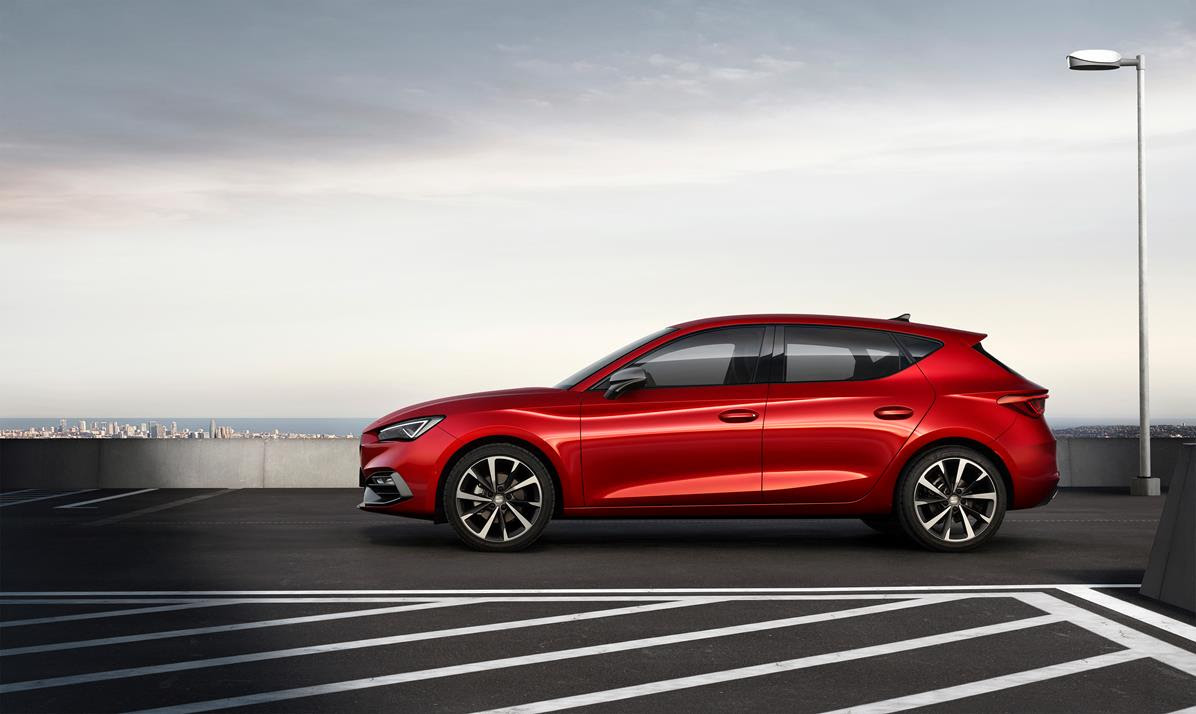Mindfulness at the wheel

Efficient driving
- Although returning to work after the holidays can be difficult, driving to the office is an opportunity to rid yourself of stress
- Mindfulness is a self-awareness discipline that helps you feel better and contributes to efficient, safe driving
- The ambient light of the new SEAT Leon allows the intensity and tone of the lighting to be varied, increasing comfort and safety
Martorell, 19/08/2020. With people returning to work, stress becomes an added companion to life. The rushing around, getting back into a routine… it all contributes to our mood. So, far from increasing our anxiety level, commutes to the office or back home are the perfect time to calm your nerves, stop the cruise control of your mind and focus all your efforts on driving. How? With mindfulness.
Full attention. “Mindfulness is about teaching the brain to focus on a single function so that it can devote full attention to it,” explains Emmy Smit, a psychologist and ITAE Empresas mindfulness trainer and collaborator of the SEAT Healthcare and Rehabilitation Center (CARS). It can be done while performing daily tasks, such as driving, so that they become less mechanical and more enjoyable. “On a physiological level, it stimulates areas of the nervous system related to positive emotions, increases the secretion of serotonin and endorphins and changes the map of brain activity” says Smit.
Greater efficiency and safety. By applying mindfulness, we are able to pay more attention at the wheel and thus reduce the risk of accidents (30% of fatal accidents are caused by distractions, according to the Spanish Traffic Department). And in addition, we will reduce CO2 emissions and save fuel and money with more efficient driving. According to Dr. Gerhard Lux, who is responsible for Hybrid and Electric Propulsion Development at SEAT, “when you’re focused you’ll use high gears, and anticipate braking by reducing your speed.”
Efficiency on board models such as the new SEAT Leon PHEV or eTSI doubles, as they offer lower combined consumption which is reduced at motorway cruising speeds. In addition, greater efficiency comes from the eTSI recovering energy from braking and thus supporting the engine with electric assistance.
The ideal environment. A harmonious space encourages calmness. In this respect, good lighting is vital. The new SEAT Leon delivers harmonious space thanks to its wraparound ambient light, which can be customised in both intensity and shade, running along the front doors and top of the dashboard like an arc. Furthermore,“feeling your breathing as the air comes in and out of your nose helps to bring attention back to the here and now and balances the nervous system”, says Smit. This requires a ventilated, cool space. The Climatronic function detects excess pollution and purifies the air thanks to its Air Quality Sensor and Air Care systems.
The ergonomics of happiness. “Your mind and body are closely connected – thoughts and emotions affect your posture, which in turn directly affects how you think and feel” Smit points out. Therefore, the ergonomics of the seats are key. At SEAT, the seats are put to the test with a machine that goes in and out of the car 20,000 times in succession.
Connecting with your inner you. Mindfulness enables you to deepen your connection with your surroundings by connecting with your inner self. In the car, SEAT Full link technology enhances the fusion of mobile and car to ensure that drivers have access to their personal world (maps, music, messages…) without being distracted. In this sense, “the console of the new Leon is positioned high to ensure that everything is in sight or at the user’s fingertips” explains Dani Molina, SEAT’s UI (User Interface) design manager. In this way, in a maximum of two clicks you can monitor the status of your car without taking your mind off driving.
10 mindfulness exercises you can do in your car
Emmy Smit, a collaborator at SEAT CARS, offers some mindfulness exercises to practice before, during and after being in your car:
- Before getting in, note your emotional state and level of fatigue and be aware of your travel destination and your intention to enjoy driving without rushing.
- Once you are seated, take a couple of deep breaths, feeling the air coming in and out through your nose.
- After fastening your seat belt, become aware of your posture, your hands on the steering wheel and body contact with the seat.
- When thoughts of non-driving subjects come up, or you are tempted to look at your phone, deliberately refocus your attention on the road, sights and sounds.
- Practice kindness to other drivers to better enjoy a safe trip.
- A red light or traffic jam is an opportunity to take a short break to consciously breathe and return your focus on the experience of the present moment.
- When you arrive at your destination, wait a moment before getting out of the car and enjoy the silence.
- Return your attention to your physical body and notice the sensations that the journey may have produced on a physiological level.
- Reflect on whether you enjoyed the trip or were stressed by it. What would you do differently the next time you drive your car?
- And, if you wish, take a few moments to be grateful for having arrived safely at your destination.




